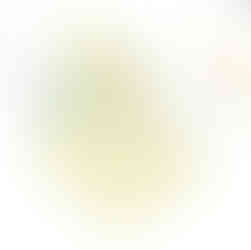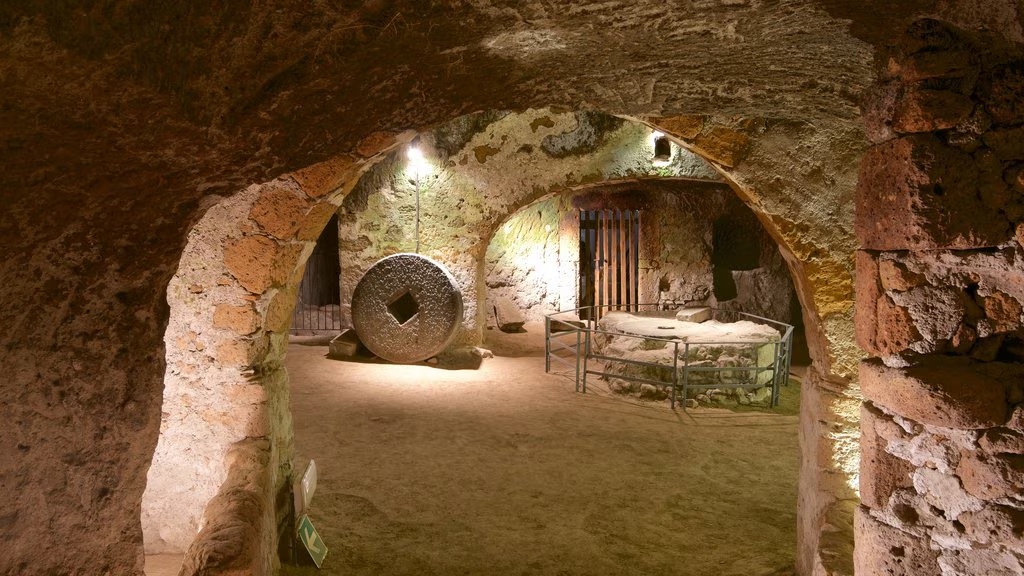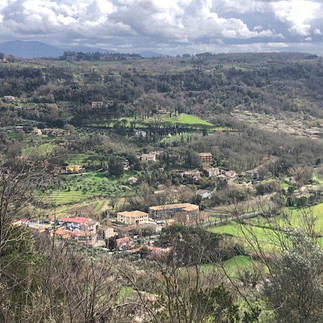Sunny warm CA was left behind for rainy cool weather that welcomed our landing in Rome. The short week layover on the way to Israel, was spent on exploring few top-hills town in Umbria and Toscana, that are usually mobbed during summer's busy tourist
season, Though the weather was not perfect, we were spared the heavy visitors' masses and cars traffic, in these popular hot spots.
Orvieto

It takes about 2 hours to drive from Leonardo da Vinci International Airport (FCO) to Orvieto via A1/E35
The Altarocca hotel resort we check into upon arrival, nests in Umbria's most pastoral tranquil surrounding, on the border of Tuscany, On a bright beautiful weather, the scenery is no doubt intoxicating. However the constant heavy rain and fog, on the day we drove in, unfortunately kept the panoramic views, hidden from sight.

Loc. RoccRipesena 62 Orvieto +39 0763344210. +393286195820
The spa hotel, Altarocca Wine Resort, about 15 minutes drive from Orviet's center is surrounded by twenty hectares of organic vineyards and olive groves, divided into four stone villas that offer panoramic views, spacious suites and cozy rooms, connected by pathways framed with fragrant herbs.
Three swimming pools, wine spa, gym and restaurant with its scenic terraces
and traditional gastronomic cuisine of Umbria and a boutique of select wines of the resort's own organic winery. are all delights the place offers.
The hotel resort is right by a small village under a protruding looming rock

This village with few inhabitants is a "small Orvieto " as it has the same origins and the same geological characteristics with a massive presence of volcanic tuff boulders.
There is road that climbs, from Ovierto in the direction of Rocca Ripesena. via a small and narrow walking trail reaching the top of the village.at at almost 370 m height.

When the weather somewhat brightened up and the rain stopped, next day, the hilly verdant amazing landscape and the town's sky-line, on the rock's top came into full sight.

Orvieto rises on a natural tableland at the summit of a 150-metre-high tufa cliff emerging, much like an island, from the surrounding plains.

Oriveto is of Etruscan origin with the more ancient traces dating back to 9th BC; the necropolis and other findings indicate however, that the Etruscan settlement reached its peak development only between the 6th and 4th BC and then declined in Roman times.
The Romans changed the Etruscan city name of Volsinii to Urbs Vetus, and hence Orvieto.
Set midway between Florence and Rome, and looming majestically on a sheer ledge of lava-stone, atop a big chunk of volcanic tufo (tuff) high above the verdant hilly valley floor, Orvieto is one of the most striking, forested hill towns overlooking beautiful rolling vineyards, Olives groves, and cypress-dotted Umbrian plains
Orvieto has two distinct parts: the old-town hilltop and the the new town below.
Driving in the upper old town with its narrow one way alleys is a true challenge, as is parking. So with a car, not lodging in the old town, which doesn't offer great hotels anyway, it is much easier to stay at any of beautiful places in the valley below.

A little funicular whisks visitors from the train station and a vast free parking lot
just behind it, for an effortless way up to the top and deposits about a 10-minutes
walk or quick shuttle ride from the heart of town.

The city high on the flat volcanic tuff's summit, was fortified with defensive walls
In medieval times, a citadel, perched on its impregnable rock, controlled the road between Florence and Rome.
Inside them luminous frescoes and enigmatic churches, quint piazzas, medieval narrow allies, palaces, museums, and towers, as well as
slow pace of life, enjoyable meanderings wine-tasting and great food sampling are all that can be found in city.

Although majestically sited on top of a volcanic tufa plateau, the hill is porous and in danger of bringing the city down as it crumbles.
The fertile volcanic slopes are covered in the vineyards that produce Orvieto’s famously crisp white wines, sweet and dry styles,made from a combination of Procanico (Trebbiano Toscano) and Grechetto, which together must account for at least 60% of the finished blend (more here)

The dark volcanic stone lends a slightly gloomy air to the city, but the Medieval Quarter at the Western top part of the city , is tucked into ancient walls hung with pots of tumbling geraniums, with steep narrow alleys, open into tiny squares, serried lines of houses which seem to sprout like strange appendages from the tufa-stone slopes clinging to the rocky spurs, and tiny cave-like workrooms of Orvietan artisans.
The city’s wealth and power peaked in the 13th to 14th c and Orvieto’s medieval nature is apparent along most streets.
Signs mentioning Sigmund Freud who frequented the town (in 1897) mere months after the death of his father, when he was still in the early days of his own self-analysis, can be found, when meandering, on several alleys' walls were Freud lodged and sampled food.

Viewing the Cathedral frescoes, Freud later pronounced:
“The finest paintings I have ever seen.”
Last Judgement, painted by Luca Signorelli in 1500.”
Not only would Orvieto be one of the most significant pilgrimages of his life, but it would make a profound mark on his work, in the "theory of repressed memories"
a defense mechanism that "ensures that what is unacceptable to the conscious mind, and would if recalled arouse anxiety, is prevented from entering into it."
Spectacular views of `the green heart of Umbria can be seen off many spots in town.

The town markets its spirituality stakes, not only by its inspiring landscape.vistas but with its low-key churches, counterpointed by the grandeur of the Duomo Cathedral
All roads lead to this piazza, where the majestic cathedral towers over every house and palazzo on the square..

The piazza was built around the Duomo, being completed over a period of more than three hundred years
North of the square stands the Maurizio Tower - one of Orvieto's symbols.
The main symbol of the city is Orvieto's Duomo - a jewel of Romanesque-Gothic architecture. known as the "Golden Lily" of cathedrals for its golden mosaics that illuminate the splendid facade.
it is home to masterpieces by Cortona's Luca Signorelli ( 1445 – 1523) and Francesco Mochi (1580 1654) and the sacred linen of the Miracle of Corpus Domini.

Orvieto's Cathedral the 13th AD colorful, prickly Gothic exterior, divided by four pillars, has been compared to a medieval altarpiece. It is a gleaming mass of mosaics, stained glass, and sculptures. Things start with Creation and end with the Last Judgment.
Inside, the nave feels spacious and less cluttered than those in most Italian churches. It was filled with statues and fancy chapels until 1877, when the people decided they wanted to "de-Baroque" their church. The nave is also an optical illusion; the architect designed it to be wider at the back and narrower at the altar, making it appear longer than it is. Windows of thin-sliced alabaster bathe the interior in a soft light.
1297 Palazzo Soliano -MODO Duomo Square # 23
Orvieto's Etruscan city treasures are most accessible in the city’s Etruscan Museums.
The MODO (the Museum of the Opera del Duomo of Orvieto) which is one of Italy's most precious cultural heritages. and the Museo Etrusco Claudio Faina, home to an important archaeological collection of Etruscan and Hellenistic works, are both set on Piazza del Duomo, next and opposite the cathedral.
Faina was founded by a local count in 1864, the collections are supposedly based on a gift of vases given to the founder by Napoleon Bonaparte’s niece. (The Bonaparte family discovered the Etruscan necropolis of Vulci
Also at Piazza at del Duomo 23 the building houses, at a street level the Tourist Information Office and where tickets to the " Underground City" are sold
Underground Orvieto –it’s a secret world

The series of 440 caves (out of 1200 in the system) has been used for millennia by locals for various purposes – WWII bomb shelters, refrigerators, wine cellars, wells and, during many a pesky Roman or barbarian siege, as dovecotes to trap the usual one-course dinner: pigeon (still seen on local menus as palombo).
The tour is to only two caves. The one-hour tours (with English-speaking guides) leave from the office next to the tourist office on Piazza del Duomo.

The rest of the caves remain in private hands. Every home, shop etc in Orvieto has its own hidden cave underneath.
Orvieto lies an intriguing underground city that winds its way beneath the main monuments.
The secret man-made caves since Etruscan times and even before are a maze of tunnels, wells, quarries, cisterns and cellars, all carved into the tufa-stone.

The major noble palaces were equipped with secret escape routes from the upper city, allowing the aristocratic owners to flee if Orvieto were besieged. The tunnels took them to safety via exits that emerged some distance beyond the city walls.The route winds through 2,500 years of city history, focusing on the Etruscan, medieval and Renaissance periods, all spread out between two different underground settlements.
The underground, marked on the map in red world had numerous practical uses over the ages – including transporting water in Etruscan times, through aqueducts and water cisterns which were still functioning.
In medieval times, the underground tunnels, nooks and crannies were used for pigeon-breeding, (Colobrium) olive-pressing and even as stabling for horses.
The tour begins with the remains of a medieval oil mill, with further oil presses and grindstones dating back to the 17th-c, proof of how long the olive oil industry was ensconced underground.
The View of the fertile Valley below from the path to the Underground Caves Location

Pozzo di San Patrizio - "Well of St. Patrick"
The historic cylindrical well is 53.15 m (174.4 ft) deep with a base diameter of 13 me (43 ft).
There are 248 steps and 70 windows that provide illumination.
It is located in the center of Orvieto near gardens that include Etruscan remains.

The well was dug in the 16c to guarantee a supply of water to its citizens all year round, in case of calamity or to survive prolonged sieges.
The water in the well comes from a natural spring and remains constant thanks to a stream that drains off any excess water and the bridge that connects the two staircases can always be crossed.

The well was built between 1527 and 1537 by the architect-engineer Antonio da Sangallo the Younger of Florence, at the behest of Pope Clement VII who had taken refuge at Orvieto during the sack of Rome in 1527 by the Holy Roman Emperor Charles V
Clement feared that the natural water supply for Orvieto would be insufficient in the event of a protracted siege
The well was completed in 1537 during the papacy of Pope Paul III.
A Latin inscription on the well states: QUOD NATURA MUNIMENTO INVIDERAT INDUSTRIA ADIECIT 'what nature has begrudged, industry has supplied'.
Amazing views seen from the well's terrace over the entire Orvieto valley
Etruscan Belvedere temple and the grand fortress, part of city gardens next to the well

part of the Archaeological and Environmental Park of Orvieto, the temple of about 5th BC, discovered in 1828, is located at the northern end of the city, near the Well of San Patrizio, it was probably dedicated to Tinia, the equivalent of Zeus for the ancient Greeks.
The visible outdoors remains of the temple consist of the stairway and some parts of the foundation and columns.. Other fragments of the architectural decorations are preserved in the Faina Museum


The Palazzo del Capitano del Popolo, also known as the Palazzo del Podesta is a late-Romanesque-Gothic architecture, late 13th-c civic palace off Corso Cavour , is made of basalt and tufa-stone. It was home to a very important institutional figure of the city during the Middle Ages: The Capitano del Popolo (Captain of the People) later home of the Mayor.
Today the building houses a fully equipped conference center and it is not open for tourist visits

In Piazza della Repubblica the site of city hall,, located at the end of the main street Corso Cavour. are the Palazzo Comunale -Municipale, and the church of Sant’Andrea, late-Romanesque-Gothic architecture, Roman Catholic of 12 c
where three different popes were crowned
Restaurants to Consider
Locanda , Orvieto
A farmhouse with Restaurant authentic Umberian/Orbieto cuisine
Strada della Staziione, 23 +390763344054. +393343705633
A nice dinner there was spent with an Israeli couple - Yoram and Sigal- we run into at the Hotel, and made spontaneous plans with..
The views from the place's terrace are beautiful thus having lunch there makes more sense.
Via Cipriano Manente, 16. 0763 343395
Considered one of the best eating places in town by its locals. Specialized in pigeons
Piaza de Popolo 2 +39 0763 342790
Via della Pace, 26. 0763.342527. 340.7864292. info@labirintodiadriano.it
Bye Bye Orvieto

To be Continued....


























































Comments